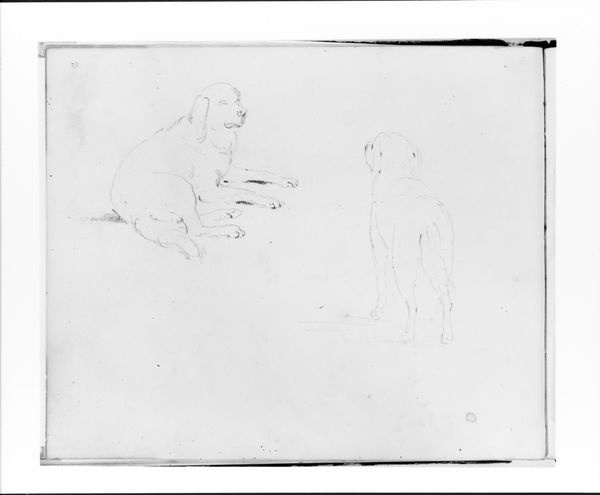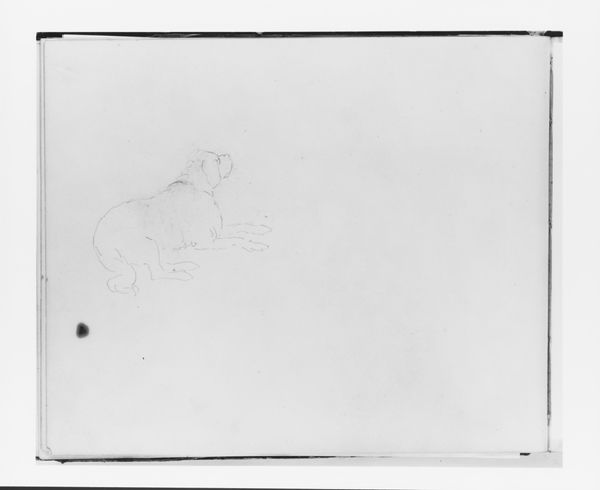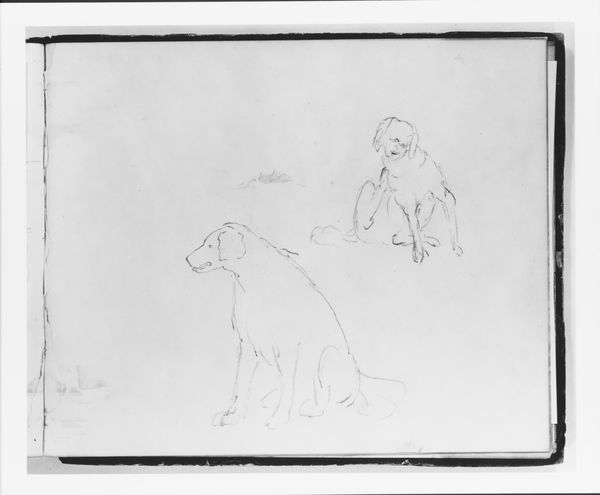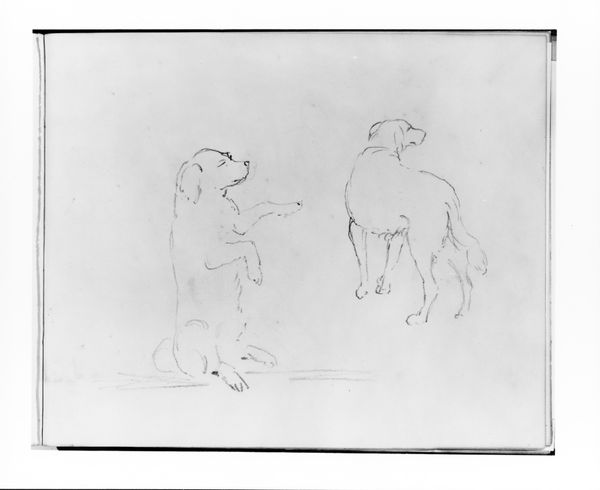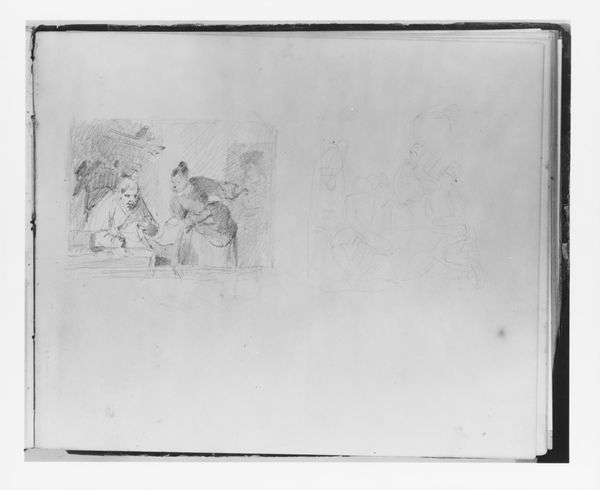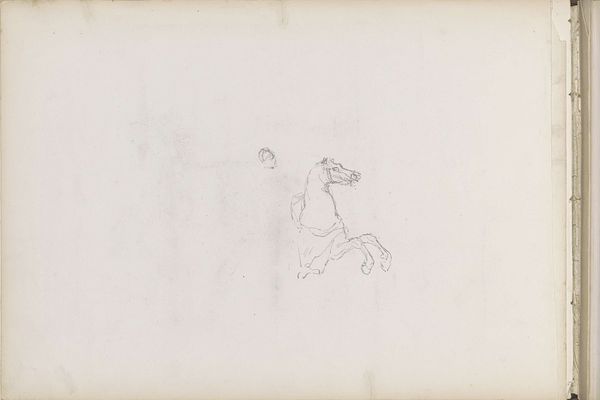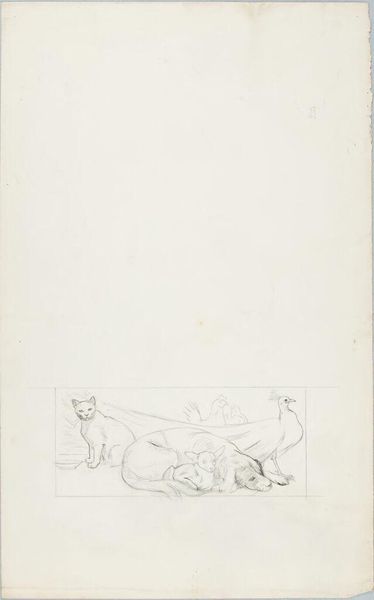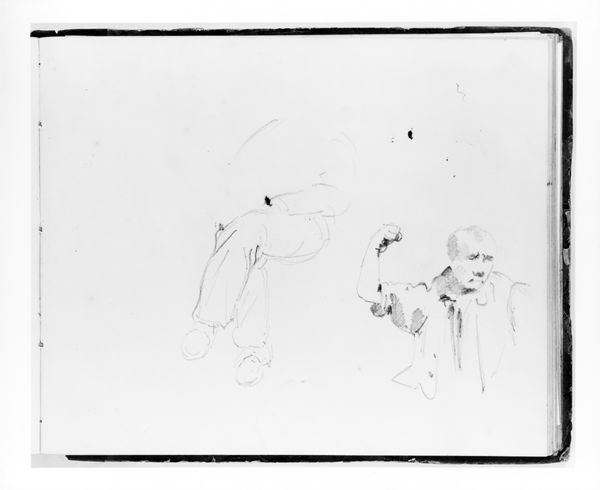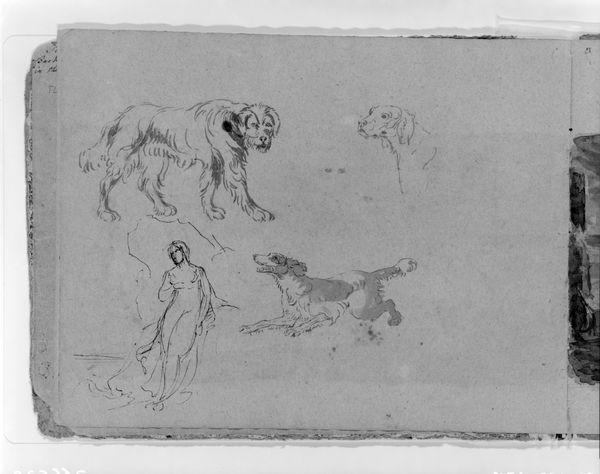
Study for the "City and Country Beaux"; Sketch of a Hound (from Sketchbook) 1835 - 1863
0:00
0:00
drawing, pencil
#
portrait
#
drawing
#
pencil sketch
#
dog
#
charcoal drawing
#
charcoal art
#
romanticism
#
pencil
#
genre-painting
#
academic-art
#
charcoal
Dimensions: 6 5/8 x 8 in. (16.8 x 20.3 cm)
Copyright: Public Domain
Editor: This sketch, "Study for the 'City and Country Beaux'; Sketch of a Hound" by Francis William Edmonds, made sometime between 1835 and 1863 using pencil, feels very intimate and immediate. The dog seems so delicately rendered, and the other part like a quick capture of a fleeting moment. What do you see in this work, particularly concerning its materiality and the way it was made? Curator: The immediacy you mention is precisely what interests me. Think about the role of sketching in Edmonds’s time. Pencil and paper were becoming more accessible, democratizing artistic creation and recording. This wasn't necessarily about producing a polished, final artwork. Instead, consider the function of a sketch: to rapidly capture observations, ideas, and forms. Does seeing it this way alter how we should look at this art work? Editor: That’s fascinating. So, the sketch itself becomes almost a record of labor, a step in a process. It shows how Edmonds was thinking through composition and form, not necessarily creating something for display in itself. So this particular sketch suggests the industrial revolution made this more available to regular individuals, rather than commissioned and for the upper classes only. Curator: Exactly! And think about the economic and social implications. The relative inexpensiveness of the materials opened up art-making to a broader range of individuals. Also, the presence of a dog hints at leisure and class. Edmonds is showing us both, potentially contrasting 'City' and 'Country'. What could be his vision here? Editor: Perhaps it's less about idealized beauty and more about observing and documenting everyday life enabled by those new accessible materials. It’s interesting how the material conditions shaped both the subject matter and the artistic process itself. It looks more like an ordinary scene with ordinary tools available to common people. Curator: Precisely. We are prompted to look at artistic skill not in the final, refined product, but in the thinking, labor, and material engagement along the way. The final product doesn't really matter as much as how people produce art or see the availability of materials. Editor: So, the sketch isn’t just a preparatory tool, it’s a window into the changing dynamics of artistic production and its connection to broader social and economic shifts. Curator: Indeed, by looking at the materials and their context, we reveal so much about Edmonds’s world and artistic practice. It shows us art can become much more accessible than just viewing high art, framed in museums.
Comments
No comments
Be the first to comment and join the conversation on the ultimate creative platform.
